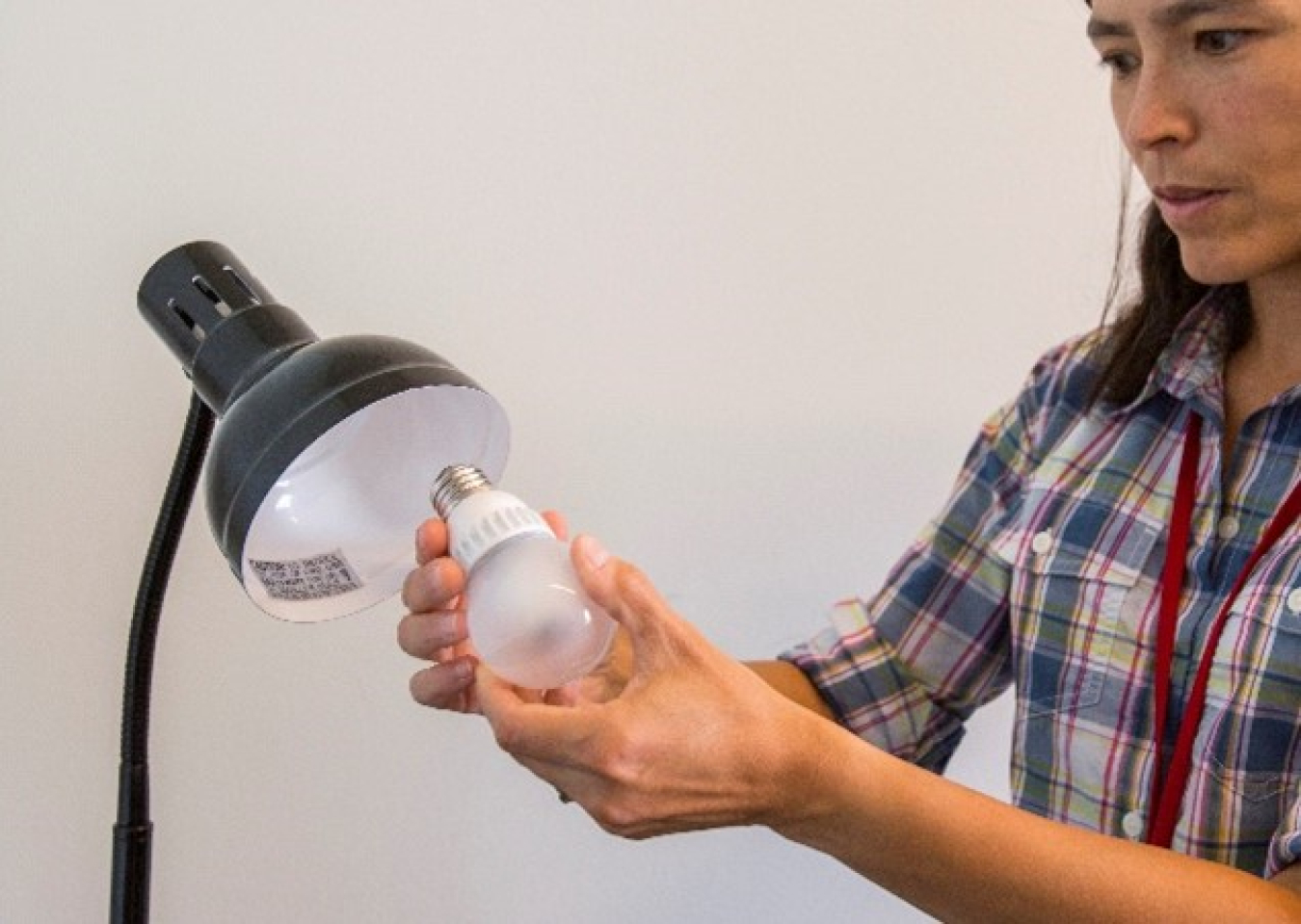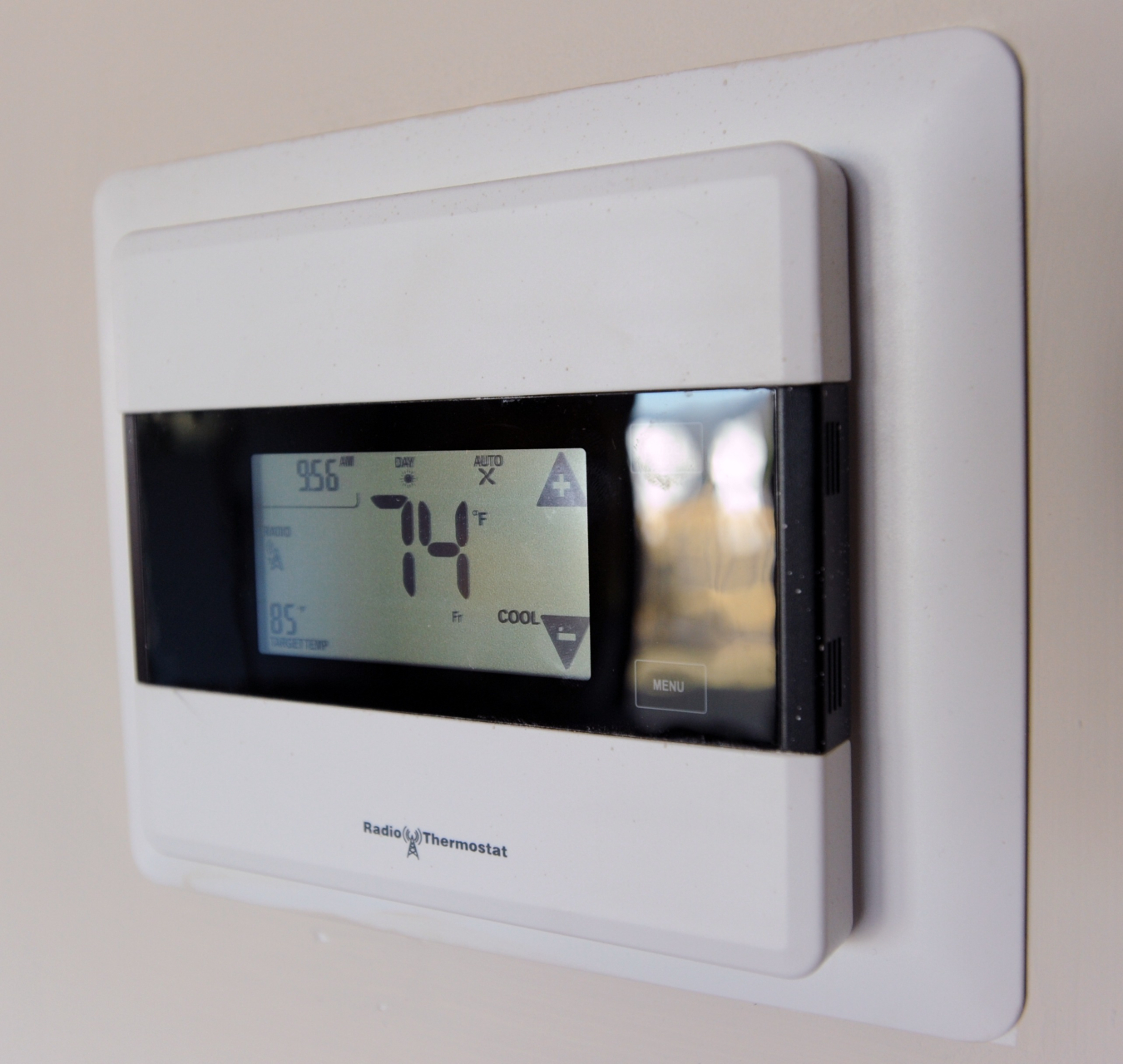Hot Tips and Tricks You Can Apply To Control Costs and Boost Savings as the Cold Takes Hold.
Office of Indian Energy Policy and Programs
January 25, 2022
Winter can be harsh, not only on our bodies but also on our budgets. Just as we shield ourselves from winter's chill with coats, we can also protect ourselves and our homes from the elements by taking a few simple steps.
In our last Energy Saver blog, we talked about more substantial weatherization upgrades and efficiency improvements to make before winter hits. But with winter now upon us, here are some simple and quick tips you can apply to improve comfort, reduce energy waste, and save on your winter energy bills.
1. Keep Heat In and Cold Out
During the mid-winter months, when many tribal communities in the contiguous 48 states and Alaska experience the coldest temperatures of the year, it's prudent to be proactive about keeping the cold air out and the warm air in by sealing your "home envelope."
Using weatherstripping, caulking, and increasing insulation are low-cost ways to reduce air leaks around your home.
Did you know, about 30% of a home's heating energy is lost through windows? You can reduce this loss with simple window coverings. Use plastic window coverings to reduce cold air transfer through glass windows, or use shades or curtains to give you greater control over your home's comfort and energy consumption. Opening the shades or curtains during the day allows sunlight and warmth into a room while closing them at night can help to trap heat inside.

2. Use Energy Efficient Lighting
With more hours of darkness during the winter—even 'round-the-clock' darkness in parts of the Arctic and Alaska—lighting is essential. On average, it accounts for around 15% of a home's electricity use.
You can save big on lighting energy use by simply swapping out old incandescent bulbs for newer, more efficient light-emitting diode (LED) bulbs. If it's been a while since you last replaced your light bulbs, there will be many options available to you. Choose bulbs that have earned the U.S. Environmental Protection Agency's Energy Star, which uses up to 90% less energy than standard bulbs.

3. Apply Basic Home Heating Hacks
If you have a thermostat, set it lower by 7–10 degrees for 8 hours a day while you are away or asleep. Doing so can shave as much as 10% per year off your heating bills. In winter, the lower the temperature inside your home, the slower the loss of heat. So, the longer you keep your thermostat at the lower temperature, the more money you save because your home has lost less energy than it would have at a higher indoor temperature.
You can also circulate air with fans to distribute heat from room to room, minimizing the need to have a heat source in each room.
Finally, you can recycle heat from household appliances to raise the temperature of a room. If you cook with an indoor oven and/or run a dishwasher after a meal, leave the door of that kitchen appliance open after use. Likewise, leave the hot water in the tub after you bathe and shower to help heat the surrounding air.
Just remember, appliances are not intended for space heating, and can be unsafe if used as a primary heat source. This suggestion is to allow heat generated after the use of appliances to move freely into your space. Why let that heat go to waste?
4. Perform Routine Maintenance
Poorly maintained systems and appliances must work harder to perform their functions.
Sticking to a regular maintenance schedule during the winter months, helps heating systems and home appliances work more efficiently.
Check the maintenance requirements of your furnace to determine whether it's possible to clean and reuse filters. If you use fire to heat your home, make sure your chimneys are clean and functioning well to maximize efficiency and save on cordwood or pellets.
5. Consciously Conserve
Families typically spend more time inside during the cold winter months, and as a result, they tend to increase their energy consumption, using appliances and electronics more. That has been even more pronounced during the pandemic, with more people working from home. Using energy saver, low power, or battery saver mode can significantly reduce energy consumption without sacrificing the performance of those systems.
Televisions are among the biggest appliance energy hogs in your home, and one way to easily cut costs is to select the standard or normal picture setting and enable energy-saving features like automatic brightness control.
Likewise, you can cut the costs associated with computer use by adjusting your settings to make sure your device goes into sleep or low power mode when not in use.
Finally, be sure to shut down and unplug devices you are not using.
According to one Natural Resources Defense Council study, "idle load electricity" accounts for almost 25% of the average household's power use and energy costs. Other studies suggest these "phantom loads" increase the average energy bill by 10%–20%.
So expel those energy vampires and welcome lower energy bills!
6. Bundle Up Inside
Last, but not least, lower your heating costs by layering up in the winter. You can significantly reduce the amount of heat needed to keep your family cozy and comfortable by dressing in warm clothes and layers and throwing on blankets to retain body heat so you can lower those thermostats.
This simple action won't cost a penny, yet it may be the easiest and most obvious way to take charge of your energy use and costs.
Follow Our Energy Saver Series and Learn More
Watch this space for more seasonal tips and energy-saving tricks offered through our energy saver blog series, or visit DOE's Energy Saver website for year-round energy saving ideas that can benefit you.
The DOE Office of Indian Energy supports a variety of energy-related projects on tribal lands and for Alaska Native Villages. Learn more about the Office, listen to a podcast, request no-cost technical assistance to advance a tribal energy goal or energy project, and read about successful projects around Indian Country.
Kerrin Jeromin

Kerrin Jeromin is a communications strategist and project manager for the National Renewable Energy Laboratory's (NREL) State, Local, and Tribal program, which includes the U.S. Department of Energy's Office of Indian Energy.
Ms. Jeromin supports strategic communications efforts across the program, with a focus in project management, outreach, and education materials. Additionally, Kerrin has a degree in meteorology, and is a Certified Broadcast Meteorologist as designated by the American Meteorological Society. Kerrin has more than a decade of experience in meteorology and weather forecasting, as well as broadcast and media production.

